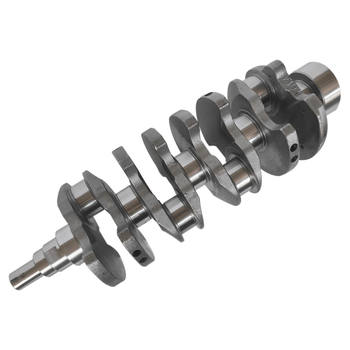The Role of Crankshafts in Engine Performance
To be honest, crankshafts don't get the attention they deserve. They're the unsung heroes of internal combustion engines, converting linear piston motion into rotational energy. As it turns out, their design plays a significant role in determining fuel economy and emissions.
Balancing Act: Weight and Stiffness
A lighter crankshaft reduces inertia, allowing for quicker acceleration and less energy wasted during engine braking. But here's the thing: weight reduction compromises stiffness, leading to increased vibrations and potential engine damage. Engineers must strike an optimal balance between weight and stiffness to maximize fuel economy and minimize harmful emissions.
Bearings and Friction: The Hidden Culprits
Have you ever wondered what causes that engine friction? One culprit is crankshaft bearings. They support the crankshaft and minimize metal-to-metal contact, but interestingly enough, they also contribute to engine friction. To tackle this issue, engineers employ advanced materials and lubrication techniques to reduce frictional losses, enhancing fuel efficiency and lowering emissions.
Optimizing Bearing Clearance
Many experts agree that proper bearing clearance is vital for engine performance. Too tight, and you'll experience excessive wear; too loose, and you'll encounter increased oil consumption and emissions. By carefully calibrating bearing clearance, engineers can ensure smooth operation and minimize negative environmental impacts.
Crankshaft Geometry: The Key to Unlocking Efficiency
Crankshaft geometry significantly influences engine breathing, which impacts both fuel economy and emissions. Engineers can manipulate crank throw, rod length, and journal diameters to optimize volumetric efficiency and reduce pumping losses. The result? A more fuel-efficient engine with fewer emissions.
The Future of Crankshaft Design
As engine technology evolves, so does crankshaft design. Researchers are exploring innovative solutions, such as counter-rotating crankshafts and split-crank engines, to further improve fuel economy and reduce emissions. These designs might just redefine the future of engine performance.
Practical Applications: Harnessing the Power of Crankshaft Design
Conclusion: A Well-Designed Crankshaft for a Cleaner Future
In my experience, understanding the impact of crankshaft design on fuel economy and emissions can lead to significant improvements in engine performance. By considering factors like weight, stiffness, bearings, and geometry, engineers can create more efficient and eco-friendly engines. So, what's the next step? Start exploring innovative crankshaft designs today and contribute to a more sustainable future!




